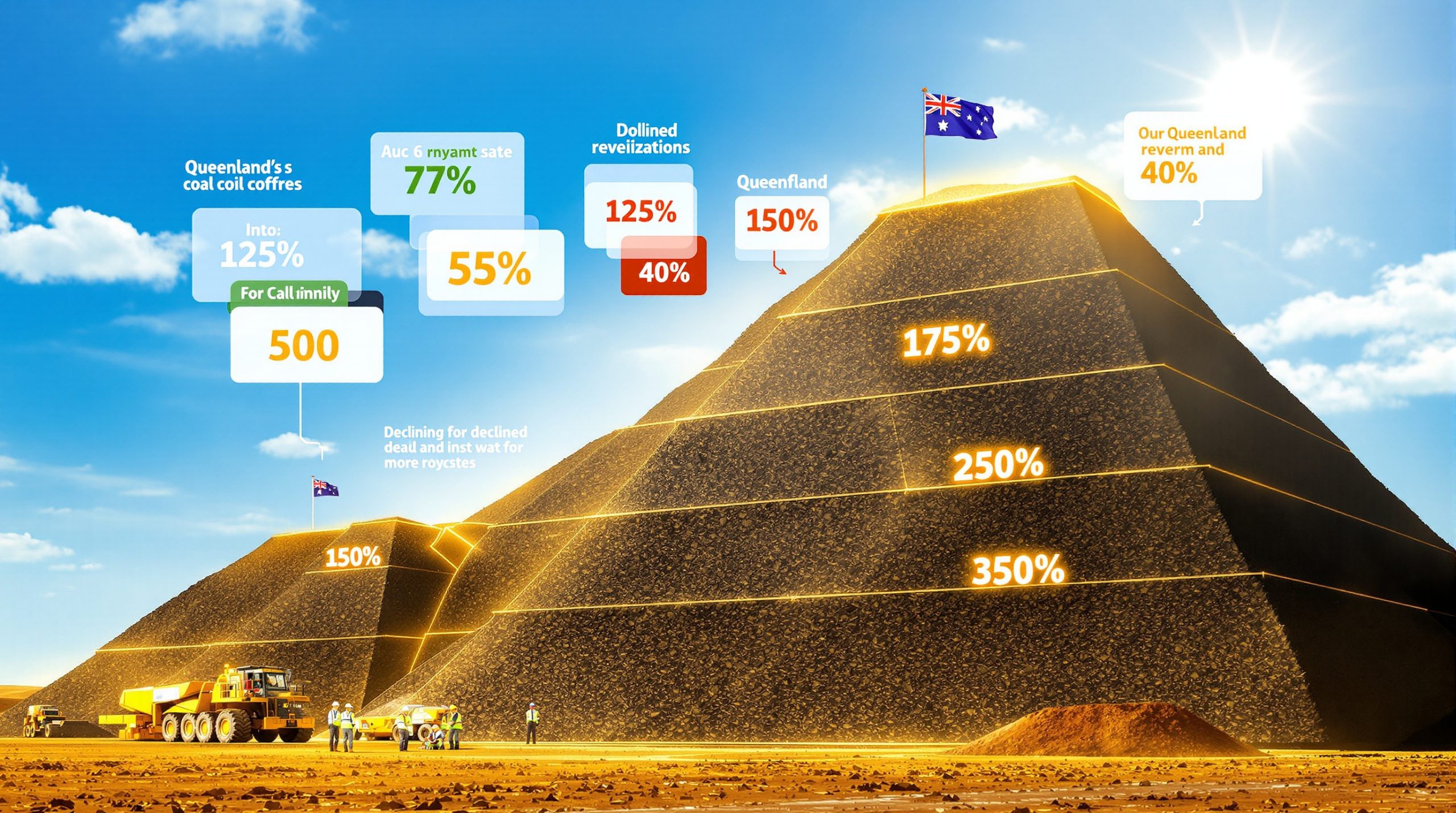Why Are Saudi Arabia and India at Odds Over Crude Supply?
The relationship between Saudi Arabia and India has entered a period of tension as disagreements over crude oil supply terms threaten potential joint refinery projects worth billions of dollars. This conflict illustrates the evolving dynamics between one of the world's largest oil producers and one of its fastest-growing consumers, with implications extending far beyond bilateral relations.
Saudi Arabia supplies India with approximately 750,000-850,000 barrels per day (bpd) of crude oil, establishing India as a crucial export market for the Kingdom. However, major projects like the $44 billion Ratnagiri refinery—a joint venture with Saudi Aramco and Abu Dhabi National Oil Company (ADNOC)—remain stalled due to unresolved supply agreements.
"The fundamental issue isn't just about oil supply, but about divergent visions for energy security and market control in an increasingly uncertain global context," notes a recent analysis from energy experts.
As Saudi Aramco pursues downstream investments targeting 8-10 million bpd of secured crude demand through global refining partnerships, the standoff with India represents a significant obstacle to its strategic ambitions in one of Asia's most promising markets.
What's Behind the Saudi-India Oil Dispute?
Supply Guarantee Disagreements
At the core of this dispute lies Saudi Arabia's reluctance to commit to long-term supply agreements under terms favorable to India. Saudi officials prefer maintaining pricing flexibility to adapt to changing market conditions, while Indian negotiators insist on guaranteed crude allocations with predictable pricing as a prerequisite for any joint venture.
"Saudi Arabia prioritizes flexible pricing to maintain market share, while India demands fixed-term contracts for energy security," according to analysis from industry experts. This fundamental disagreement has created an impasse that neither side seems willing to break.
The technical details reveal even deeper divisions. India strongly opposes take-or-pay clauses in long-term contracts, which would impose penalties during demand fluctuations. Meanwhile, Aramco's pricing model ties Asian sales to Dubai/Oman benchmarks, while India seeks more favorable Brent-linked discounts to reduce exposure to regional price volatility.
Divergent Strategic Priorities
Saudi Arabia and India approach energy security from fundamentally different perspectives. For Saudi Arabia, downstream investments represent a strategy to secure predictable crude outlets amid growing competition and energy transition pressures. The Kingdom raised Official Selling Prices (OSPs) to Asia by $0.90/bbl in May 2025 despite OPEC+ supply increases, signaling its continued focus on maximizing revenue over volume.
For India, with oil imports accounting for 85% of domestic consumption and an import bill that surged to $165 billion in 2024 (8.3% of GDP), energy security means diversification and favorable pricing. As one Indian Petroleum Ministry official stated: "Diversification isn't optional—it's existential for India's $3 trillion economy."
Investment Partnership Complications
The stalled Ratnagiri refinery project exemplifies the partnership complications stemming from these disagreements. Initially announced with great fanfare, this 1.2 million bpd integrated refinery and petrochemical complex faced delays first due to land acquisition issues and subsequently due to unresolved supply guarantees.
Similar joint ventures across India's growing refining sector remain in limbo, creating opportunity costs for both nations. Saudi Aramco's investment targets in India's downstream sector represent a crucial component of its global strategy, while India's refinery expansion plans (targeting 9 million bpd capacity by 2030) require significant foreign investment and technical expertise.
How Does This Dispute Affect Global Oil Markets?
Market Sentiment Impact
The Saudi-India standoff comes at a pivotal moment for global oil markets, with Brent crude hovering around $60.11 per barrel (down 1.93% following OPEC+ output increase announcements) and WTI at approximately $57. Market sentiment remains particularly sensitive to disagreements between major producers and consumers.
"India's pivot to Atlantic Basin crudes reshapes trade flows, pressuring Middle East sour grades," notes a Goldman Sachs commodity strategist. This shift has tangible impacts on price differentials between crude grades and regional benchmarks.
The dispute contributes to market uncertainty at a time when demand forecasts already face downward revisions due to economic headwinds in key Asian economies and accelerating energy transition efforts globally.
OPEC+ Production Decision Context
This bilateral tension unfolds against the backdrop of significant OPEC+ policy shifts. The organization has accelerated the rollback of production cuts, adding 2.1 million bpd to global supply in 2025. OPEC+ compliance rates dropped to 85% in April 2025, with Iraq and Kazakhstan exceeding quotas by 300,000 bpd.
As one Rystad Energy analysis observed: "OPEC+ must balance market share retention with price stability as non-OPEC supply grows." This balancing act becomes more challenging when key consumer nations like India actively diversify away from traditional suppliers.
The Saudi-India dispute exemplifies the broader challenges facing OPEC+ in maintaining market cohesion and influence as consumer leverage grows.
Price Forecast Adjustments
Major financial institutions have responded to changing market dynamics with significant revisions to oil price projections:
- Morgan Stanley cut its 2025 Brent forecast to $62.50 from a previous $70, citing oversupply concerns
- Goldman Sachs reduced its price outlook by $8 per barrel, highlighting weakening Asian demand
- JP Morgan expects increased price volatility through 2025 as market share battles intensify
These adjustments reflect growing concerns about structural oversupply, with the Saudi-India dispute serving as both symptom and contributor to this market narrative.
What Are India's Oil Supply Diversification Efforts?
Strategic Import Diversification
India has implemented an aggressive diversification strategy that's already showing results. Russian crude's share in Indian imports rose dramatically to 34% in 2024 (versus just 2% pre-2022), surpassing Saudi Arabia as India's largest supplier. Simultaneously, U.S. crude imports increased by 28% year-over-year in Q1 2025, reaching 550,000 bpd.
"India's crude sourcing algorithm now prioritizes delivered cost (CIF), factoring in insurance and freight differentials," explains an industry analyst, highlighting the sophisticated approach behind India's diversification efforts.
The country has also pursued innovative supply arrangements:
- BPCL's 2024 swap deal for U.S. LPG bypassed Middle Eastern suppliers, saving $15/ton
- Nayara Energy's pact with Trafigura secured 100,000 bpd of Canadian heavy crude via Suezmax shipments
- India's 2024 LNG swap deals saved $1.2 billion, demonstrating the viability of alternative procurement models
Domestic Refining Expansion
India continues ambitious expansion of its refining infrastructure, with several projects progressing despite the Saudi impasse:
- New greenfield refineries planned for the east coast, including the 9 million ton Nagapattinam project
- Brownfield expansions at existing facilities in Paradip, Panipat, and Kochi
- Joint ventures with partners beyond Saudi Arabia, including Russian and European energy companies
These expansions aim to increase India's refining capacity to 9 million bpd by 2030, supporting both domestic consumption and export ambitions.
Alternative Energy Investments
While securing oil supplies remains critical for immediate energy security, India is simultaneously making significant investments in alternative energy:
- Renewable capacity reached 225 GW in 2025, displacing approximately 400,000 bpd of fossil fuel demand
- Strategic petroleum reserve expansion to 9.5 million tons in 2024, with phase-II targeting 12 million tons by 2028
- Green hydrogen mandate (5 million tons by 2030) reduces refining sector emissions by 12%
These initiatives serve both climate goals and energy security objectives by reducing India's vulnerability to oil supply disruptions and price volatility.
How Is Saudi Arabia Repositioning Its Oil Strategy?
Downstream Investment Push
Saudi Arabia's national oil company, Aramco, continues aggressive pursuit of international downstream investments despite tensions with India. The company directed $12.4 billion toward downstream projects in 2024, acquiring stakes in Chinese and Korean refineries while expanding petrochemical capabilities.
"Aramco's chemical integration strategy boosts heavy crude premiums by $2.50/bbl in key markets," according to IHS Markit analysis, highlighting the commercial logic behind this approach.
Notable recent developments include:
- Luberef base oil joint venture with India's Reliance (2025) securing 200,000 bpd of Arabian Light crude offtake
- Significant expansions in Chinese refining partnerships, particularly in Zhejiang and Fujian provinces
- Integration of trading capabilities through Saudi Aramco Trading Company's Singapore hub, which traded 6.2 million bpd in Q1 2025
Production Capacity Expansion
Despite global transition efforts, Saudi Arabia continues expanding its production capacity to maintain market influence:
- Production capacity expansion targeting 13 million bpd by 2027, with 55% allocated to Asian markets
- Development of previously untapped fields, including unconventional resources in the Jafurah basin
- Enhanced recovery techniques boosting output from mature assets like Ghawar and Khurais
The Jafurah unconventional gas field development aims to replace 500,000 bpd of crude burn for domestic power generation by 2030, freeing additional oil for export markets.
Price Strategy Adjustments
Recent moves suggest Saudi Arabia is preparing for more aggressive market positioning:
- Raising official selling prices to Asian customers despite increasing OPEC+ supply, signaling confidence in demand
- Implementing a dynamic pricing model using AI to optimize OSPs across 15 Asian customer tiers
- Maintaining production flexibility to respond rapidly to market share challenges from U.S. shale or other producers
As one BloombergNEF commentary noted: "Price over volume—Saudi prioritizes margins amid energy transition uncertainty," reflecting the Kingdom's strategic calculation that premium pricing in core markets delivers better long-term results than volume-driven approaches.
What Are the Economic Implications for Both Nations?
India's Energy Security Concerns
For India, the dispute highlights critical economic vulnerabilities:
- Oil import bill surged to $165 billion in 2024 (8.3% of GDP), creating significant pressure on the current account
- Every $10/bbl oil price increase worsens India's current account deficit by 0.5% of GDP, according to the Reserve Bank of India
- Fuel subsidy burden reached $28 billion in 2024, eroding fiscal space for infrastructure and social spending
The economic stakes extend beyond direct energy costs. Indian oil marketing companies lost $4.2 billion in 2024 from subsidized LPG and kerosene, while energy price volatility complicates industrial planning and investment decisions.
Saudi Arabia's Revenue Considerations
Saudi Arabia faces its own economic pressures that influence its negotiating position:
- Fiscal deficit widened to 4.1% of GDP in 2024 amid production cuts and diversification costs
- Debt-to-GDP ratio hit 31.7%, limiting capacity to fund ambitious Vision 2030 mega-projects
- Non-oil GDP growth slowed to 2.9% in Q1 2025, raising questions about diversification progress
The Kingdom requires oil revenues to fund both its economic transformation agenda and maintain social spending commitments. This fiscal reality constrains Saudi Arabia's flexibility in supply negotiations, particularly when offering discounts.
Trade Relationship Beyond Oil
The oil dispute threatens a bilateral economic relationship that extends far beyond energy:
- Bilateral trade exceeded $42 billion in recent years, with growth targets now in jeopardy
- Saudi investments in Indian non-energy sectors including technology, infrastructure, and manufacturing
- Indian expatriate workforce of 2.6 million in Saudi Arabia, generating $11 billion in annual remittances
Both nations must carefully balance energy disagreements against these broader economic interests to avoid damaging overall relations.
How Might This Dispute Be Resolved?
Potential Compromise Scenarios
Resolution pathways could include several promising approaches:
- Tiered supply guarantees with flexible pricing mechanisms linked to Brent benchmarks
- Partial ownership stakes in exchange for preferential supply terms with volume flexibility
- Price corridors with escalator clauses (±$1/bbl for every $5 Brent movement) balancing stability and market responsiveness
"Tiered supply agreements with price corridors offer win-win solutions," according to a Harvard Kennedy School energy policy paper, providing a framework that addresses core concerns for both parties.
Historical data shows 78% of OPEC-related disputes resolved via production quota adjustments between 1990-2020, suggesting pathways exist for compromise when economic incentives align.
Alternative Partnership Models
If current negotiation frameworks prove unworkable, both sides might explore innovative alternatives:
- Project-specific agreements rather than comprehensive partnerships, limiting risk exposure
- Limited-term supply contracts with renewal options, allowing periodic reassessment
- Joint investments in third countries or neutral territories, such as African upstream assets
The 2022 UAE-India coal-for-fertilizers swap deal provides a precedent for creative bilateral arrangements, having boosted overall trade by 17% while addressing commodity security for both nations.
Diplomatic Engagement
High-level diplomatic intervention will likely prove necessary to break the impasse:
- Ministerial-level energy dialogues focusing on technical rather than political considerations
- Head of state discussions on strategic partnerships, potentially at G20 or other multilateral forums
- Third-party mediation via the International Energy Forum (IEF) as suggested by a former OPEC Secretary-General
Diplomatic solutions must address the core tension between Saudi Arabia's desire for pricing flexibility and India's need for supply certainty within a framework that allows both sides to claim success.
How Does This Fit Into Broader Global Energy Trends?
Shifting Producer-Consumer Dynamics
The Saudi-India tension exemplifies the evolving relationship between traditional producers and emerging consumers:
- Global fossil fuel share in electricity generation fell below 50% for the first time in March 2025
- OPEC's global oil market share dropped to 28% in 2024, the lowest since 1990
- Consumer nations increasingly dictate terms in a buyer's market shaped by shale and renewables
"Consumer nations now dictate terms in a buyer's market shaped by shale and renewables," notes the IEA Executive Director, highlighting the fundamental power shift occurring in global energy markets.
This rebalancing creates both challenges and opportunities. Producers must adapt to maintain market relevance, while consumers can leverage their growing influence to secure more favorable terms.
Energy Transition Considerations
Both countries navigate this dispute within the accelerating global energy transition:
- Long-term demand uncertainty for fossil fuels complicates investment decisions for 30-year assets
- Carbon intensity of refining operations faces increasing regulatory and market scrutiny
- Investment timelines for fossil fuel infrastructure conflict with decarbonization targets
Saudi Aramco and Indian refiners must consider whether today's supply agreements will remain viable in a future market with potentially lower oil demand and stricter carbon regulations. The ongoing net‑zero debates add further complexity to long-term energy planning.
Geopolitical Alignments
The dispute has significant implications for broader geopolitical strategy shift and relationships:
- India's balancing act between Middle Eastern suppliers, Russia, and Western allies grows more complex
- Saudi Arabia's diversification of partnerships beyond traditional markets, particularly in East Asia
- Regional security considerations in the Middle East and Indian Ocean increasingly intersect with energy trade
As one petroleum geopolitics expert observed: "Energy security and national security have become inseparable for both nations, complicating purely commercial negotiations."
The resolution of this dispute will signal broader trends in how energy relationships adapt to changing market realities and reshaping commodity markets and global commodities insights.
FAQ: Saudi Arabia-India Oil Supply Dispute
How important is India to Saudi Arabia's oil export strategy?
India represents one of Saudi Arabia's largest and fastest-growing oil export markets, purchasing approximately 750,000-850,000 barrels per day of Saudi crude in recent years. As the world's third-largest oil importer with 85% import dependency, India is crucial for Saudi Arabia's long-term market security, especially as traditional markets in Europe and North America face declining consumption due to energy transition efforts.
What alternatives does India have if Saudi supply terms remain unfavorable?
India has successfully diversified its import sources, increasing purchases from Russia (now 34% of imports, up from 2% pre-2022), the United States (up 28% year-over-year in Q1 2025), and West African producers. Additionally, India has expanded its strategic petroleum reserves to 9.5 million tons in 2024 and accelerated domestic renewable energy development, with capacity reaching 225 GW in 2025. Innovative procurement models like LNG swap deals saved $1.2 billion in 2024, demonstrating viable alternatives to traditional supply arrangements.
How might
Are You Monitoring ASX Mining Discoveries?
Secure your advantage in the Australian mining investment landscape with Discovery Alert's proprietary Discovery IQ model, which instantly notifies you about significant ASX mineral discoveries before the broader market reacts. Explore our dedicated discoveries page to understand why historic mining discoveries can generate exceptional returns, and position yourself ahead of the market with actionable, real-time insights.




